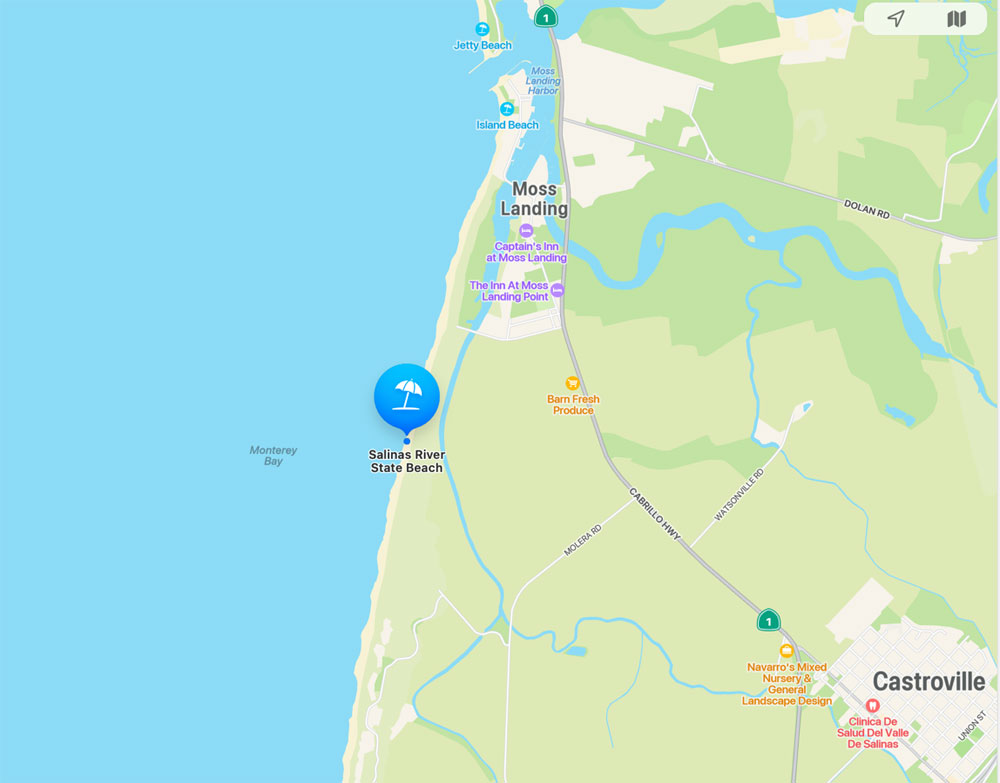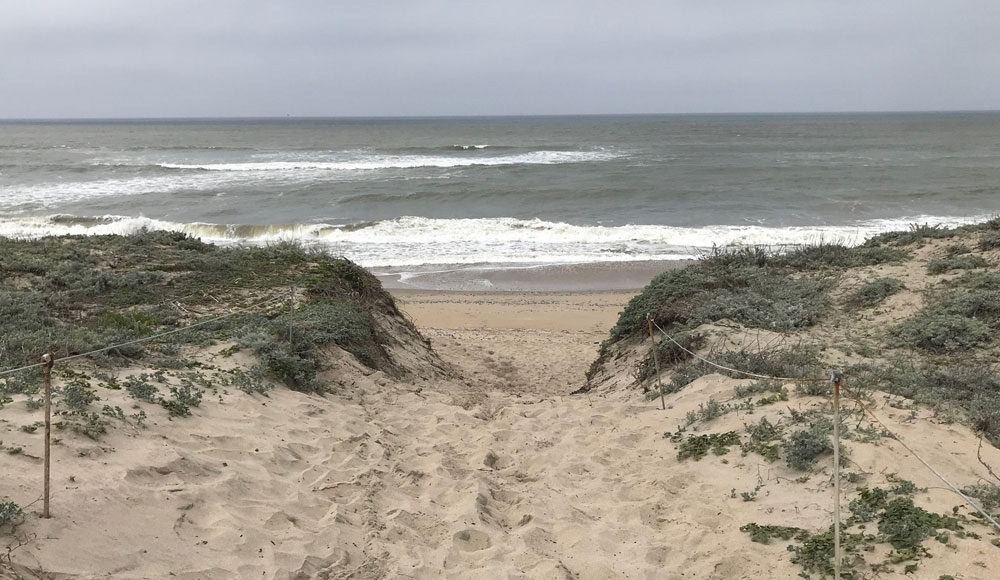During my brief running phase, I ran in the Santa Cruz to Capitola Wharf to Wharf Race. I was dead last. The guy who was right in front of me, second to last, starts making fun of me.
“Hey buddy, how does it feel to be last back there?”
I said, “You really want to know what it feels like to be last?”
And I drop out of the race.
“Walking is not a sport. Putting one foot in front of the other is child’s play. When walkers meet, there is no result, no time … walking is the best way to go more slowly than any other method that has ever been found”
—French philosopher Frédéric Gros, Philosophy of Walking.
Many people want to walk fast, it’s the main thing. When we’re driving, it might seem reasonable to make good time. In a speeding car, the world looks general. It’s not until we join the land, one step at a time, that it becomes particular. I’m deeply impressed by people who can hike 20 miles or more in one day. That’s not what I’m after; I’m after these friends. The lesson today is to find our slowness. Today is about what mysteries happen when we lollygag.
Slow Walking, Soul Talking
In this day when every possible experience gets a Yelp rating, when there is a fee attached to everything short of breathing, hiking offers the most incredible deal imaginable: free travel. It gets even better. Take a hike and when you’re done, you’re somewhere else.
Sleepy John Sandidge is El Jefe of our group and leads us to Salinas River State Beach. We drive south on Highway 1 past Moss Landing.
Sleepy John Sandidge, Ben Rice and I will be joined by half a dozen friends. In terms of life path, it is a motley group. There will be the retired judge, the retired lawyer, the retired dentist, the retired newspaper publisher, and on the other hand there is me and Sleepy John. The difference is that the haves never speak about their millions of dollars, while Sleepy John and I never stop talking about our hundreds. I ride with Sleepy John on the way down to Salinas River Beach.
I say, “Sleepy John, do you consider yourself retired?”
“Definitely. I just can’t figure out from what.”
“Well, you did retire from your Please Stand By live radio show. A 1,650-show-run on KPIG is a lot to retire from.”
“True. It’s amazing what little impact ending that show had on my income. You?”
“I don’t think the word ‘retired’ applies to me. I’ve been looking for work since Covid.”
“I think that is called ‘unemployed.’ But hiking is kind of your new job. You’re making money right now. Right?”
“Big bucks. Tens of dollars.”
Sleepy John and I break into a duet to the tune of “Money for Nothing” by Dire Straits.
“Hiking for nothing, ticks for free.”
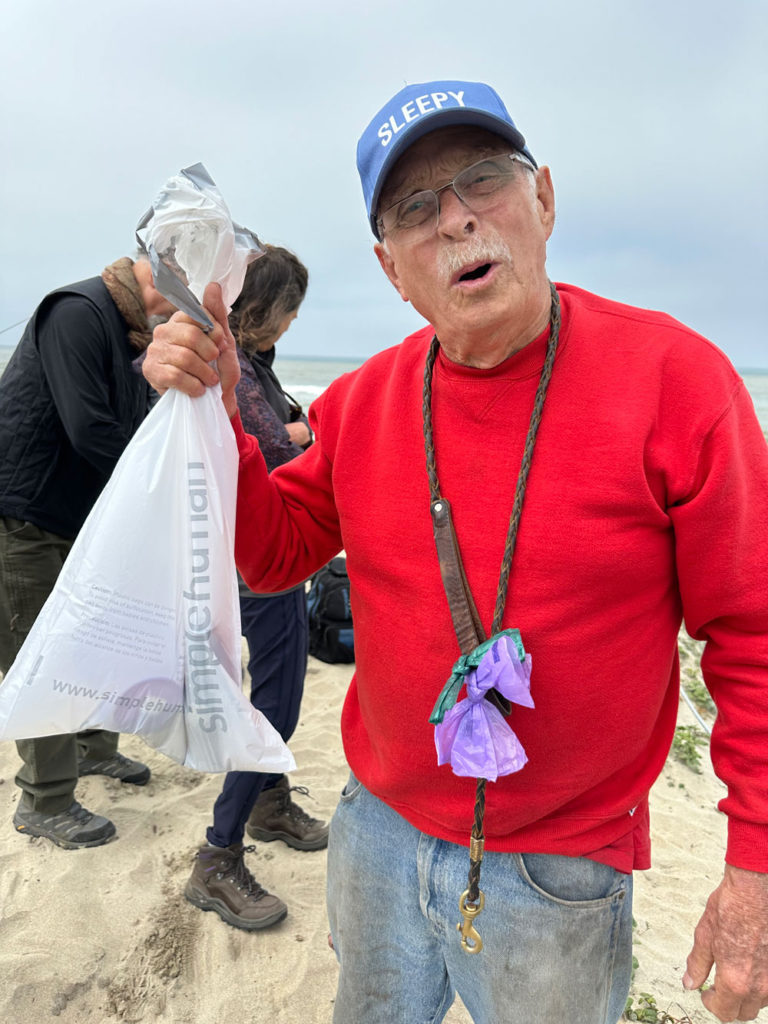
Doctors will tell you, “If you’ve seen one 80-year-old, you’ve seen one 80-year-old.” This Nov. 1, Sleepy John Sandidge will turn 85. Here he is picking up trash on Salinas River Beach. He is an inspiration to those of us who aspire to become a tough old coot.
Blown Off Course
From the parking lot, we walk out a sand pathway that opens to the beach.
We are mystified to find thousands of stranded, four-inch-long, blue, mussel-like creatures that have a sail-like membrane on top. We Google them and find they are Velella velella, tiny colonies of organisms with a clear fin sticking out the top and tentacles dangling down. This free-floating hydrozoan lives on the surface of the open ocean, and are also called sea raft, by-the-wind sailor, purple sail, or little sail.
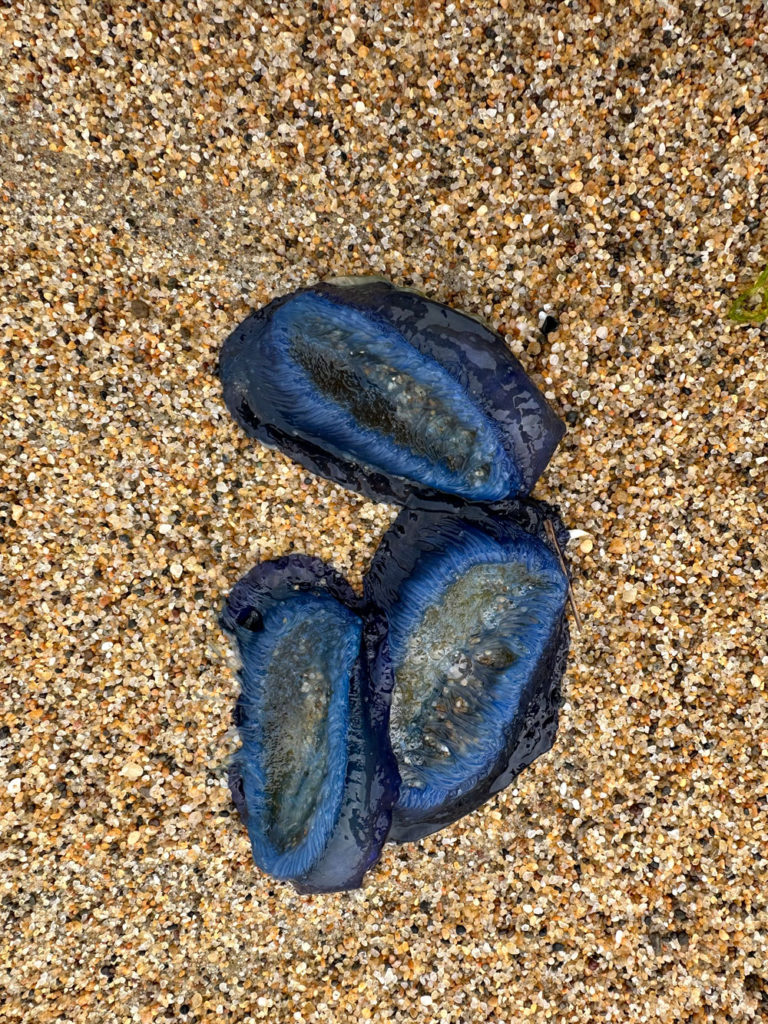
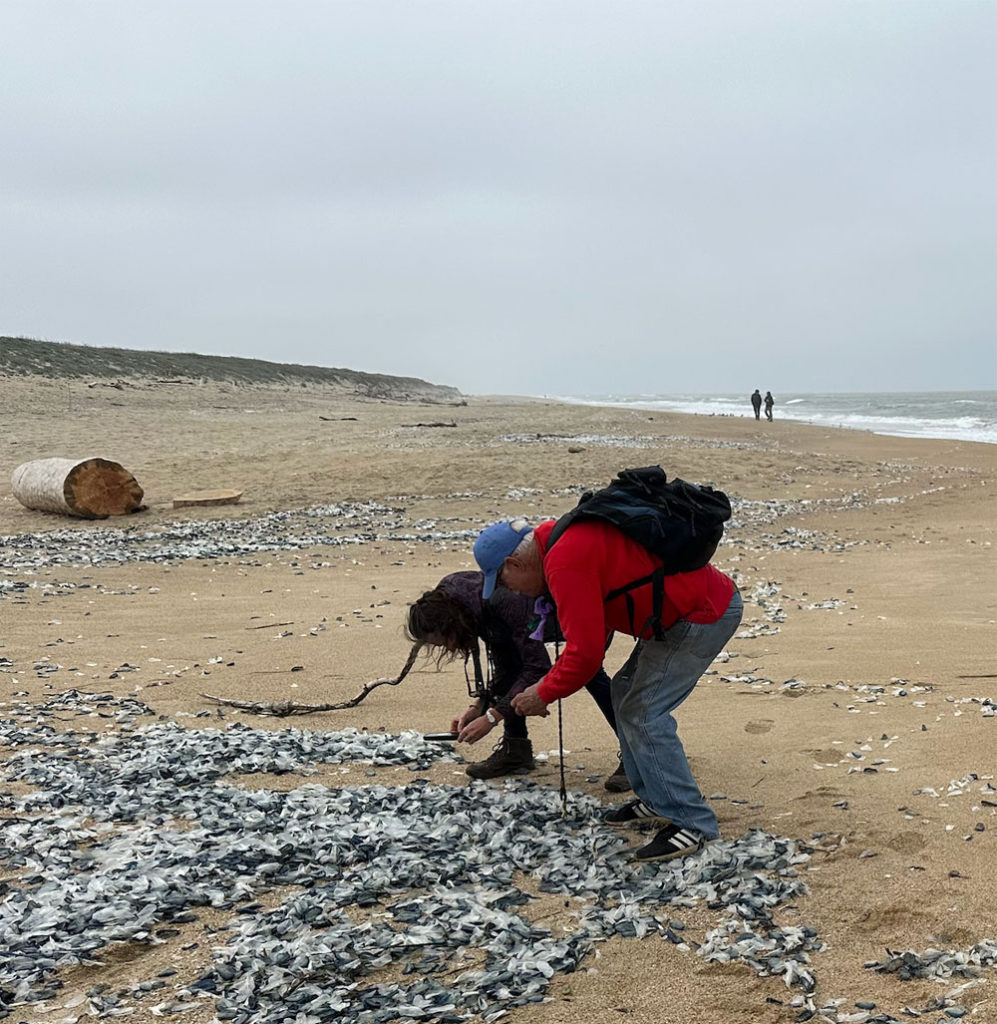
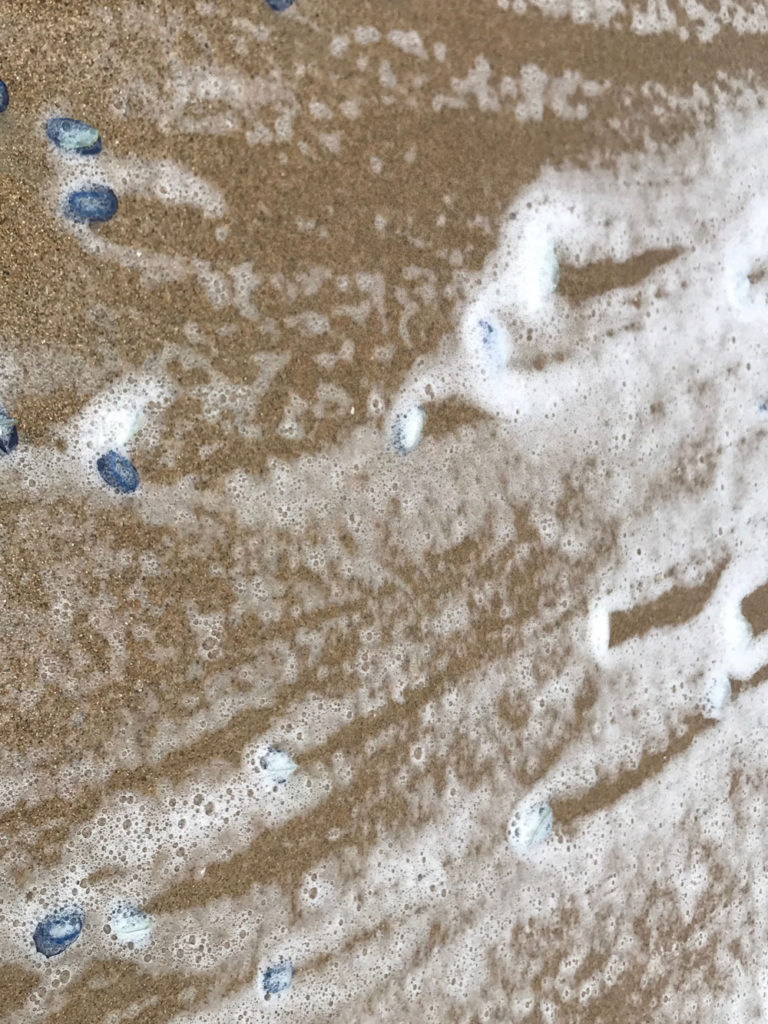
Anya Stajner, from the Scripps Institution of Oceanography, says, “Though they look like one organism, velella are colonies of creatures from a class called hydrozoa. They spend most of their lives out in the open ocean, searching the water column below them with tentacles that sting fish larvae or zooplankton, but are harmless to humans. One part of the colony is responsible for eating, another for reproduction. Each by-the-wind sailor is a colony of all-male or all-female polyps.”
We walk through thousands of them on the beach, like a stranded blue tide. As much as I like to blame climate change for everything, these critters are not jumping out of a burning forest to get stranded on the beach. Their fixed sail limits their navigation to tacking with a 45-degree angle with the wind, and sometimes the wind just takes them too close to the shore and waves wash them up onto the sand. The lines of dying animals are inches deep and go for miles.
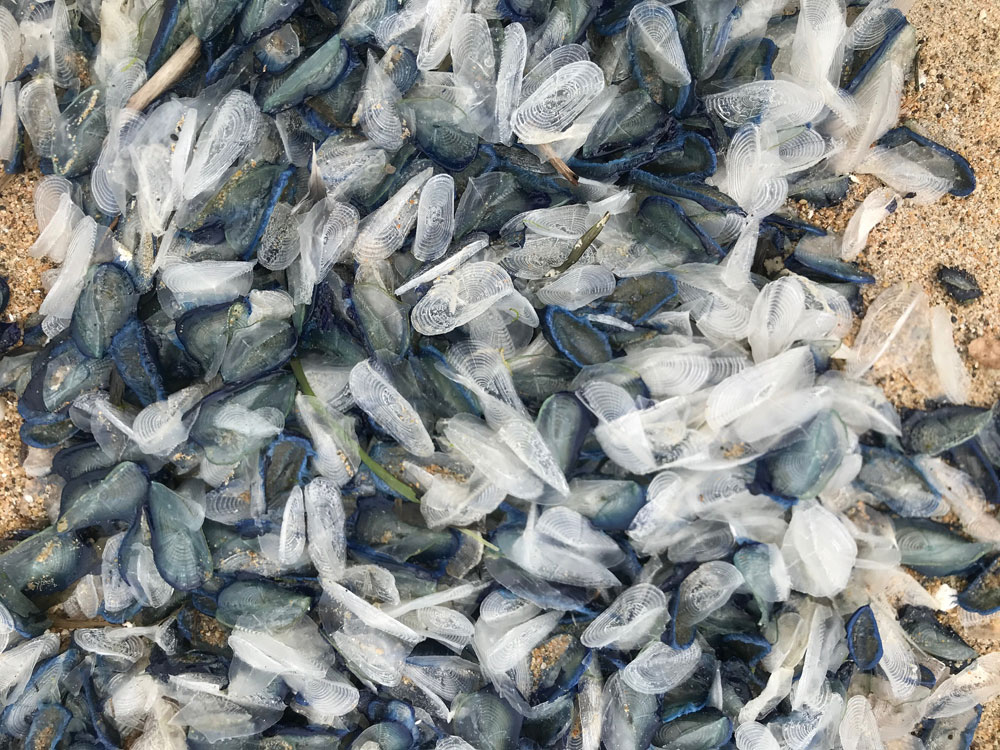
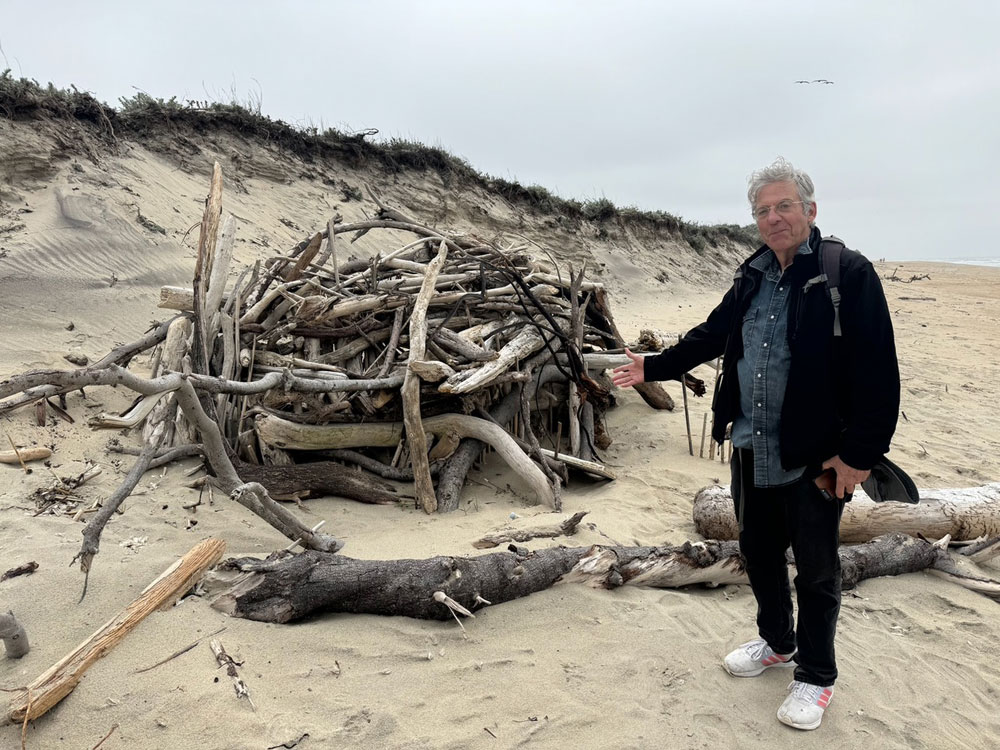
And the final word from Frédéric Gros, “To walk, you need to start with two legs, the rest is optional.”
I recommend Salinas River Beach State Park for lollygagging with friends. We found soft sand, and beach shoes work. There are porta-potty opportunities along the way and beautiful ocean views and dunes with stunning vegetation. It’s not so much of a hike as a great beach walk. Saw a guy fishing and met some gregarious state workers setting up ropes to protect the nesting area of the western snowy plovers. I found the cutest snowy plover video on earth.
How To Get There: Take Highway 1 south, past Moss Landing, turn right on Potrero Road, cross the bridge and the free parking lot is there. Haute Enchilada has gotten crazy expensive, but there is Phil’s Snack Shack & Deli with outdoor seating and awesome sandwiches nearby. They carry stacks of Good Times for your reading while eating pleasure.
